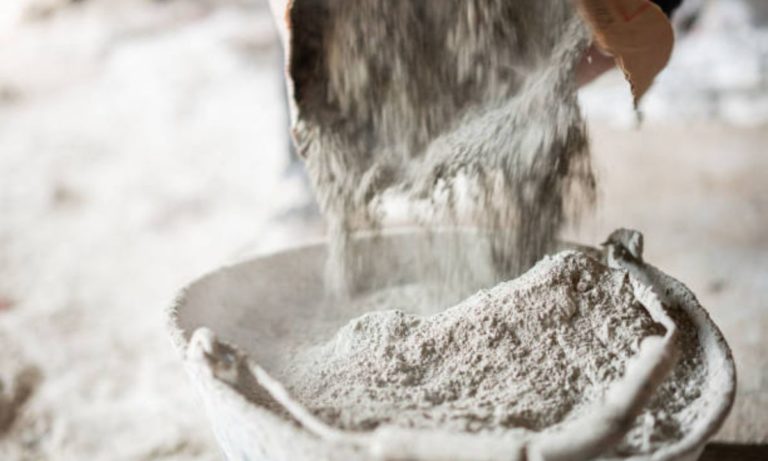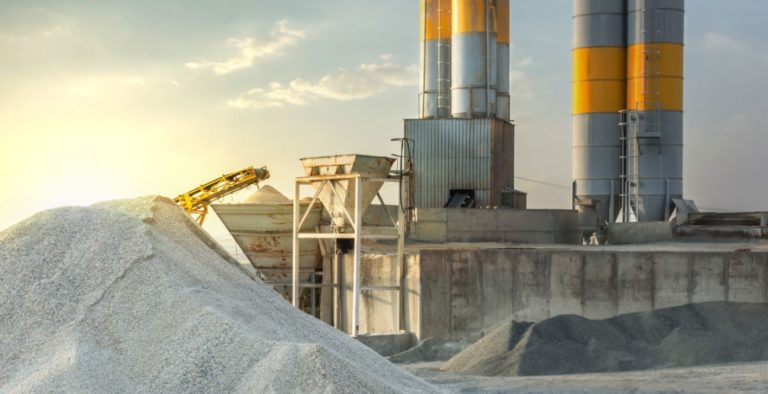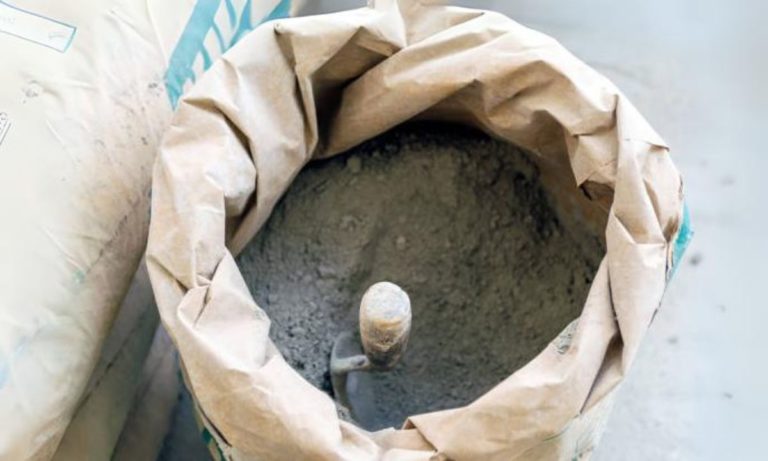How Covid-19 Impacted the Cement Industry Globally and in Bangladesh?
The world economy suffered terribly due to the emergence of Covid-19. The pandemic quickly took over the whole world as it is highly transmissible, disrupting the workflow and closing down workplaces and factories. Governments imposed lockdown protocols to contain the spread of the deadly virus. As a result, workers around the world suddenly had no jobs and no earning sources.
The cement industry also fell victim to the deadly grasp of the virus. Construction works were halted, thus cement consumption was reduced rapidly. The cement industry is one of the most important industries, especially in the Asia-Pacific region. Any disruption in this sector can widely influence the lives of thousands of people who are closely linked with the industry.
Impact on Cement Industry During Covid-19 Globally
It is challenging to outline the full effect of the pandemic on the global cement industry as the pandemic is not over yet. The initial lockdown phases created havoc in this sector as all production plants were completely shut off. However, the short-term direct effects are now being observed.
Impact on Demand
The global cement demand shrank 3% year-on-year, including China, and 6.5% year-on-year, excluding China 2020. Experts are saying that the impact on the cement industry during Covid-19 is unevenly distributed as some countries are expected to be more resilient than others.
Utilization Rate
Due to economic slowdowns, the industry was not operating at total capacity even before the pandemic. Moreover, cement plants are expected to see additional drops in utilization rates. The utilization rate fell to around 60% in 2020 as the demand became significantly lower. However, many cement producers were expected to expand beyond 2021, but it will largely depend on the post-Covid-19 economic recovery.
Stock Prices
In 2020, the stock prices of major cement producers fluctuated by an average of almost 50%. Fluctuations in the foreign exchange rate during this period also deteriorated the profit margins of cement producers in emerging markets as it increased the energy cost and cost of servicing debts in hard currencies.
Source: IFC
Impact on Cement Industry During Covid-19 in Major Cement-Producing Countries
China was the first country that enter lockdown phases back in February 2020. But February is the month of the Chinese New Year Celebration and construction sites are often closed over this period as workers return home for festivities. As a result, the effect of lockdowns on the industry was much more muted than in countries like India, where lockdowns occurred at a very active period of construction works, ahead of the monsoon season.
By the month of April, the cement industry in China was experiencing slightly more demand compared to the previous year., which made up for the drops in the first quarter. The Chinese government welcomed infrastructure projects to deal with the economic downturn caused by the pandemic. So, the Chinese cement industry is expected to recover quickly from the pandemic’s impact. Demand for cement is expected to be more inflated in the next three years.
On the other hand, India’s cement industry was not so fortunate. The demand for cement dropped more than 15% in 2020, while some UAE producers are anticipating demand to halve in 2020. The developing countries mostly suffered more than economically strong countries as they do not have the capacity or access lines of credit to invest in their infrastructure projects.
Source: Cement Americas
Impact on the Cement Industry During COVID-19 in Bangladesh
Bangladesh’s cement industry experienced a devastating blow after the emergence of a global pandemic caused by COVID-19. Lockdown protocols were imposed worldwide, and the economy suffered terribly both locally and globally. The pandemic created grave repercussions in every manufacturing sector in Bangladesh, and the cement industry was no exception to that. A complete lockdown protocol was applied for 52 days from March 26 till May 16, 2020. The impact on the cement industry during COVID-19 was severe, and it halted all sorts of ongoing construction projects in Bangladesh as cement is a key construction material. Social distancing or maintaining a safe distance from other people is a must to ensure the safety of everyone. Therefore, all manufacturing plants in the cement industry were shut down to maintain the safety of workers.
The cement consumption rate diminished overnight as mega projects like the Padma Bridge, Rooppur Nuclear Plant, Matarbari Power Plant, Karnaphuli River Tunnel, and Dhaka Metro Rail came to a standstill, including the real estate sector. Individual purchases of cement due to local construction were also completely shut off as all businesses were to remain closed during the lockdown period. Unlike the Garments sector, the cement industry is mainly based on local sales. So, the industry suffered a significant loss without local demand for cement.
Source: Cemnet
After lockdown protocols were implemented, demand for cement drastically reduced. At the start of April 2020, there was a reduction in cement production of around 60%-65%. Sales plummeted from 25 lakh bags daily to only 5 lakh bags. Dhaka has the highest consumption rate of cement in Bangladesh, but it was most severely affected by the pandemic. Some sales were ongoing on minimal scales outside Dhaka.
Even though Bangladesh can meet local demands and can export cement, the industry is entirely import-based for the supply of raw materials. So, banking and port operations play crucial roles in collecting supplies. The country-wide lockdown protocols affected the import logistics as banking hours were limited. The transactional capacity of importers was eroded drastically, and they could not open new Letters of Credit or debentures for importing essential raw materials from foreign countries. Limited banking hours, inadequate resources in Customs and Port Operation, and excessive delays in local logistics made the task of importing raw materials very discouraging overall. Thus, a long queue of vessels in Chittagong port has been the norm during the 2nd half of 2020. The sector experienced a degrowth of about 14% in the first half of 2020.
The fall in growth rate was entirely due to the impact on the cement industry during COVID-19, which are:
- Shortage of Raw Materials: The cement industry in Bangladesh is entirely dependent on imports of raw materials like clinkers and limestones. Manufacturers were not able to procure the necessary raw materials to produce cement.
- Production Cease in Peak Season: Lockdown protocols in Bangladesh were introduced from March to April. The time coincided with the peak cement sale season. Manufacturing plants were required to be closed down and could not meet the peak demand.
- Halting Government Mega-Projects: All government mega-projects were suspended due to the pandemic. These mega-projects contributed to more than one-third of the national cement consumption. Therefore, cement producers missed opportunities to profit from such a vast source.
- The slowdown of Real Estate Activities: As the economy suffered, people restrained themselves from purchasing flats or renovating their properties. As people were unable to pay, real estate developers’ source of income also froze.
Global Response to the Crisis
The cement industry is considered an essential sector in many countries. Hence, many cement producers have continued their production through the pandemic while complying with safety protocols imposed by corresponding governments. Many governments aim to take proactive actions to support the industry. Cement-producing companies are looking for ways to survive the crisis by strengthening their financial position amid decreased demands. Some of the critical short-term actions to support the cement industry are as follows:
- Minimizing non-essential expenses and cutting labor costs to achieve overall cost-saving
- Restraining maintenance costs by limiting to only critical projects and reducing capital expenditure by rescheduling in projects that are in progress
- Withdrawing credit lines and halting dividend payments to boost liquidity
Health and Safety Measures
After a better understanding of COVID-19, experts suggest resuming all economic activities while following strict health safety measures. So, companies ensure their plants comply with health and safety measures set by corresponding governments. Moreover, cement manufacturing plants have low personnel density and a strictly maintainable working environment. So, companies are focusing on continuing production under new regulations.
Government Support
The cement industry plays a crucial role in GDP and development in many countries. Some governments adopted policies to reduce tax on raw materials or enable loans with minimum interest rates to support this industry.
How Bangladesh is recovering from the Impact on the Cement Industry During Covid-19
After the lockdown protocols were lifted in Bangladesh, the cement industry started to experience a bit of normalcy after almost three months of a stagnant situation. According to Md Alamgir Kabir, the president of the Bangladesh Cement Manufacturers Association (BCMA), the cement industry suffered terribly in the first six months of 2020, and many cement producers fell into trouble. The economy started to reopen gradually on May 30, but the sector’s business did not return to pre-pandemic stages. However, the demand for cement started to rise locally as various mega projects taken by the government came into motion and the spike in remittance inflows.
“ $21.9 billion of remittance flew in Bangladesh in 2020, which is the highest yet, according to Bangladesh Bank”
Bangladeshi cement companies have requested Bangladesh Bank to extend the ongoing moratorium period to fight against the economic fallout of the pandemic. Due to the unprecedented pandemic, the global economy is suffering from recession, and Bangladesh is also a victim of it. Experts are still unsure when the cement industry will start operating at pre-pandemic levels.
At the start of 2021, the cement producers in Bangladesh finally started to operate thoroughly. The industry earned export revenue of US$7.26 in FY 2020-2021, compared to US$9.14 in the year-ago period, which indicates a fall of 20.6% YoY. However, the industry aims to exceed the amount in the following year as production work resumes worldwide.
The government previously imposed an Advance Income Tax (AIT) of 5% on the import of raw materials by the cement industry. Later it was reduced to 3% at the beginning of 2020. Such tax rules burden the cement industry, which faces low profit margins. The tax and tariffs have impacted domestic cement producers the most.
Source: The Daily Star
Despite all the disruption due to COVID-19, Bangladesh’s cement industry has been able to recover for the most part and continues to be enthusiastic about the future. Sales volume has recovered as government mega-projects and real estate activities resumed. There has also been an expansion in construction in rural areas as the country witnessed the most significant remittance inflow in 2020. All these factors have contributed to the industry’s V-shaped recovery. An optimistic approach within the industry shows promises for the future.
Mir Cement faced turmoil during Covid-19 like all other cement producers in Bangladesh. However, Mir Cement aims to turn this situation around in the upcoming years. The company showed steady growth in the pre-pandemic period. As the economy is restoring to the previous pace in Bangladesh, Mir Cement aims to catch up as soon as possible.
Frequently Asked Questions (FAQs)
Is cement price affected by the pandemic?
Ans: The price of each bag is somewhat similar to the price before the pandemic.
Is the quality of cement affected due to a shortage of supply?
Ans: All cement producers must sure a proper mixture of raw materials before manufacturing cement. So, quality control is an absolute necessity.
Has the Bangladesh cement industry recovered from the impact of Covid-19?
Ans: Bangladeshi cement industry is still recovering from the impact of COVID-19.
Will the overcapacity of cement in Bangladesh reduce the price of cement?
Ans: As lockdown protocols are being lifted, construction is expected to resume at a full pace which will make up for the overcapacity. So, prices will not be lower.
Which country produces the highest amount of cement?
Ans: China is the largest manufacturer of cement in the world.






